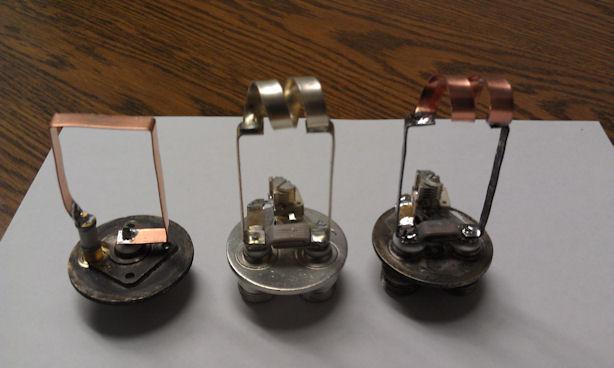
Above - W3KKC standard series loop, TX-RX factory low pass loop, W3KKC low pass loop.
TX-RX Coupling Loop Project
By Kevin K. Custer W3KKC
February 1, 2012
Some Background:
Some years ago I acquired four, 10 inch 450 MHz combiner cavities that
operated at 3/4 wavelength, made by TX-RX. Being three times the
required length on 450 MHz allows them to operate at 1/4 wavelength on
150 MHz. This particular set of cavities have nice long rods that
allow for tuning down to 135 MHz - great for 2 meter conversion.
After studying the different duplexer theory articles on R-B, I decided
to build some coupling loops to see what kind of notch depth I could achieve
at 600 kHz spacing between pass and notch. Absolute notch depth is
determined by several factors, including, but not limited to: type of
loop, amount of coupling, inductance of the loop, spacing between pass
and notch, cavity size and Q.
Using a standard series loop / capacitor arrangement of adequate inductance affords about -40 dB of notch depth when the loop is rotated for about 0.75 dB of loss at the pass frequency. Rotating the loop affects several factors, including, but not limited to: coupling, pass frequency loss, spacing between pass and notch, and return loss (RL). While this type of loop performance in the notch arena is very good, when rotated properly for acceptable insertion loss of 0.75 dB at the pass frequency, the RL is only 22 dB, and -15 dB RL bandwidth is a bit narrow.
About a year ago while looking for some quality N tees, Gary Bonebrake W5BI was kind enough to forward pictures and drawings of factory TX-RX coupling loops for high and low pass. It was obvious that TX-RX had gone through a lot of effort to design this more complex loop for a reason, but what was that reason? I told Jeff DePolo about my project, and he just happened to have a set of factory loops that I could use for comparison: one high pass, one low pass, as they are somewhat different.
After comparing the simple series loop with the more complex loops that TX-RX builds, the reasons are about greater return loss and deeper notch depth. Return loss is a factor of how well something matches at a particular impedance, in this case 50 Ohms. The factory coupling loops exhibit 32 dB of RL at the pass frequency, and 44 dB of notch depth - a depth not possible with a standard Tee and its riser length. There are two types of N Tee connectors, and if you have a duplexer that uses a one connector approach - use the ones that are the shortest.
Now begs the question: is 22 dB RL adequate, or is the labor-intensive loop construction with more return loss and a couple of dB more rejection worth it? Since the maximum RL of the TX-RX loop is 10 dB more and -15 dB width of the pass is considerably wider, and there is about 5-6 dB more obtainable rejection, there is some benefit to this more complicated design. Another thing to consider is transmitter stability. Since the RL is better over a wider frequency range, possibly so is power amplifier stability. Right now this is just an educated guess on my part but I hope to have the time to do testing with the all-famed GE MASTR II PA without the Z matcher to see what happens.
In the last few weeks I have acquired the components to build a replica TX-RX low pass coupling loop - the one more difficult to make. It has come out very well, with performance within 1/2 dB of the factory loop in both notch depth and RL. Pictures follow...
Concept:
Build a set of 2 meter coupling loops that act and perform as close to the
factory-built ones as possible using common parts.
Why? Because it's a great project.

Above - W3KKC standard series loop, TX-RX factory low pass loop, W3KKC
low pass loop.
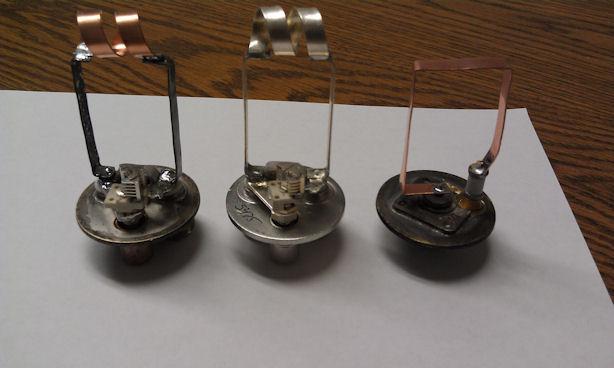
Above - W3KKC low pass loop, TX-RX factory low pass loop, W3KKC standard
series loop.
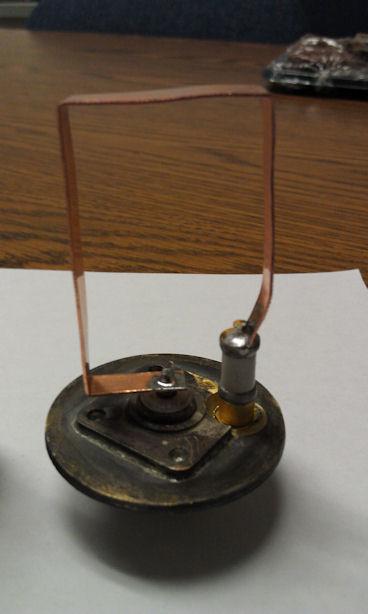
Above - W3KKC standard series loop.
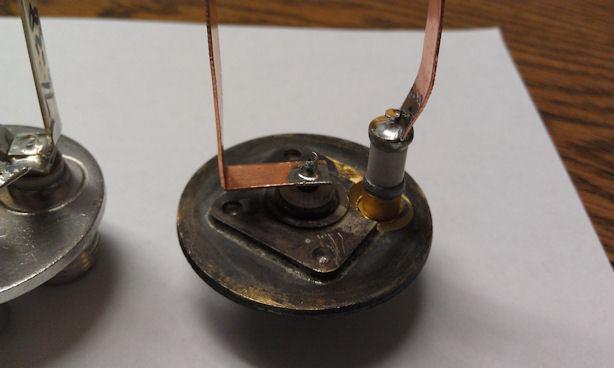
Above - W3KKC standard series loop.
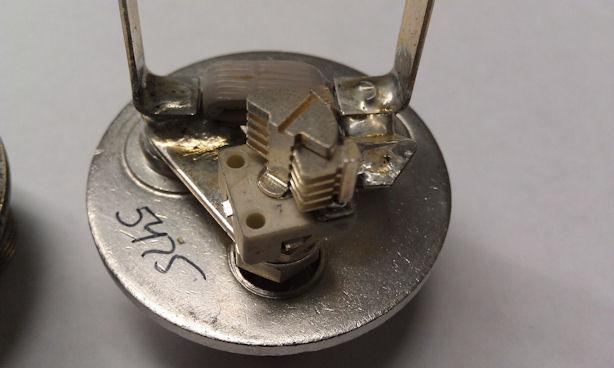
Above - TX-RX factory low pass loop.
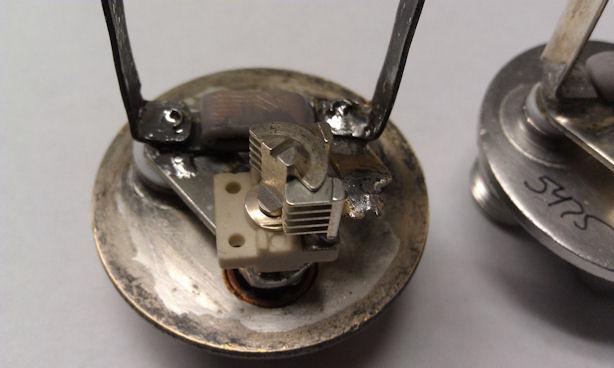
Above - W3KKC low pass loop.
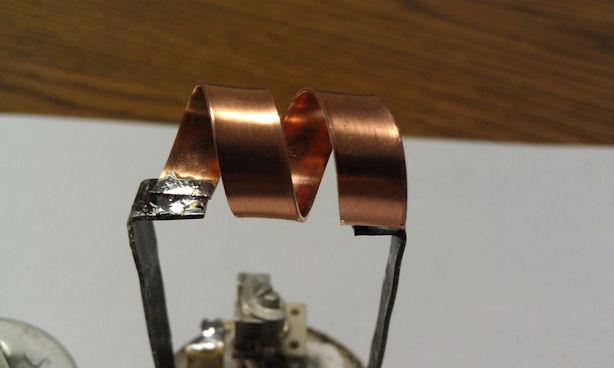
Above - detail of W3KKC inductor turned out of magnetic field.
This adds inductance without adding (much) coupling.
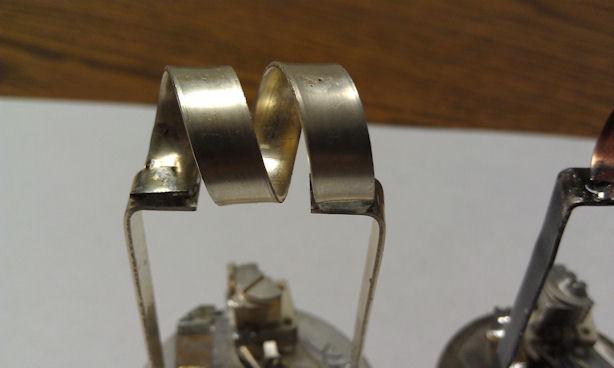
Above - detail of factory inductor turned out of magnetic field.
This adds inductance without adding (much) coupling.
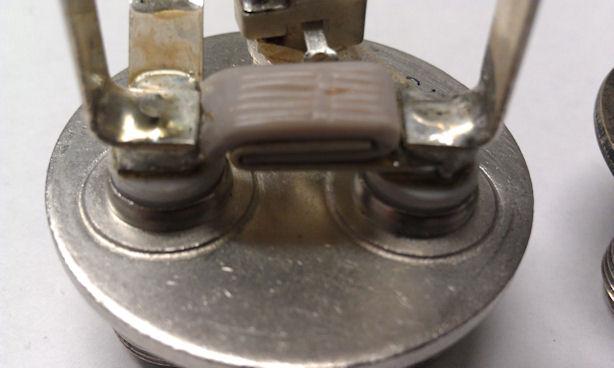
Above - detail of factory high Q fixed capacitor. Works out to
about 9 pF.
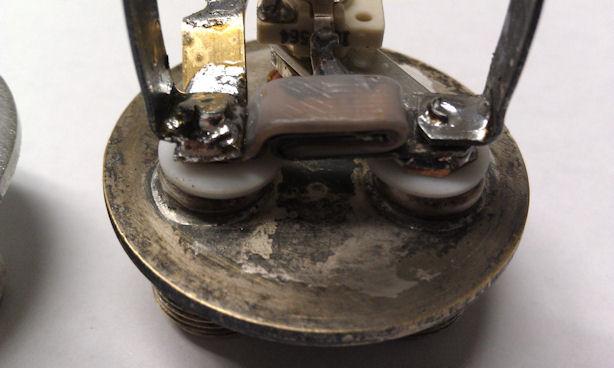
Above - detail of W3KKC high Q fixed capacitor. Works out to
about 9 pF.
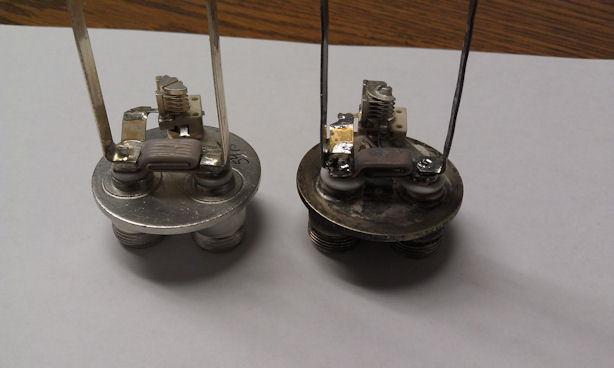
Above - another side by side shot - factory loop on left, W3KKC loop
on right.
This shot shows the fixed cap teflon washers that sit on the center
pin for spacing.
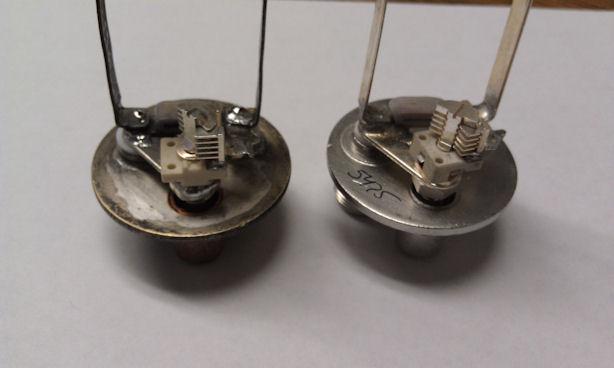
Above - another side by side shot showing variable air dielectric capacitor.
W3KKC loop on left, factory loop on right.
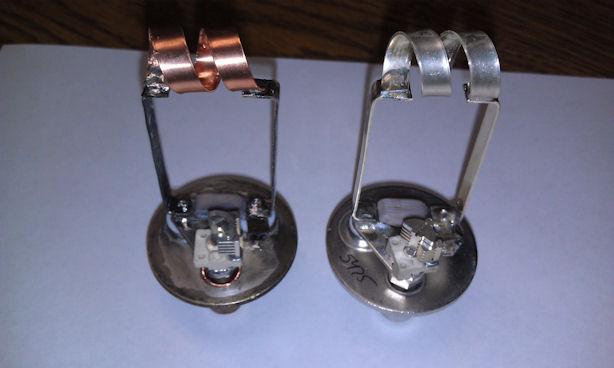
W3KKC on the left - TX-RX on the right.
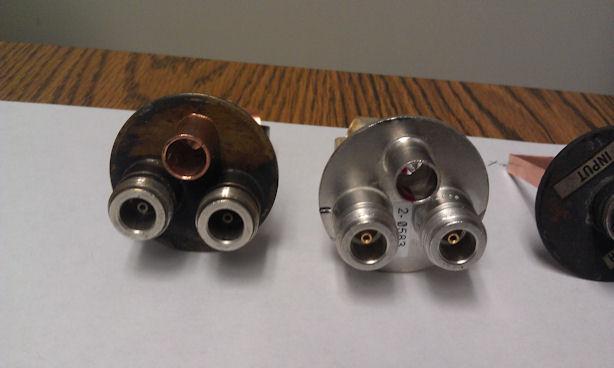
Side by side again, W3KKC on left TX-RX in the middle and partially
the W3KKC series loop on the right.
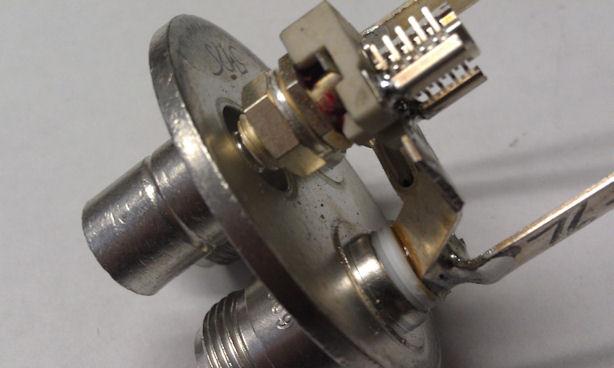
TX-RX variable capacitor shot.
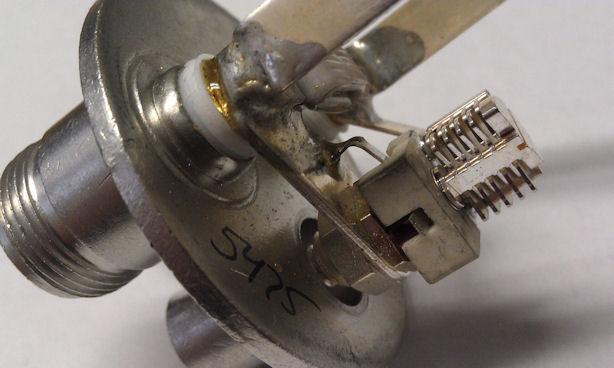
Above TX-RX - Copper capacitor strap which suspends the variable capacitor
in mid air.
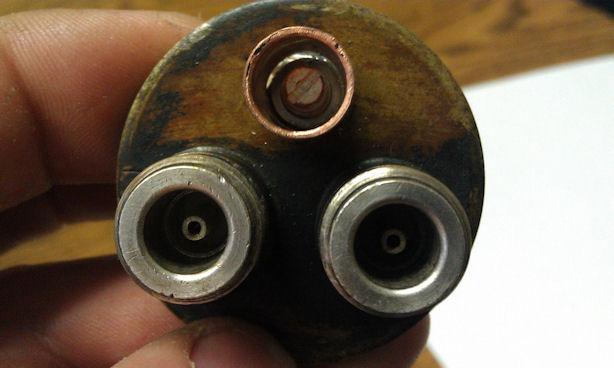
I don't think I did too bad.....
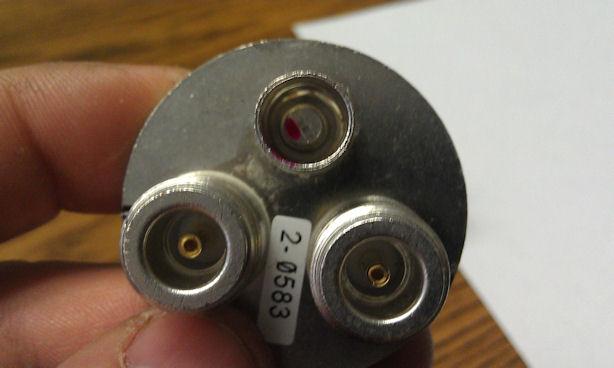
The pictures below are of the High Pass - Low Reject coupling loop. This is a factory TX-RX loop.
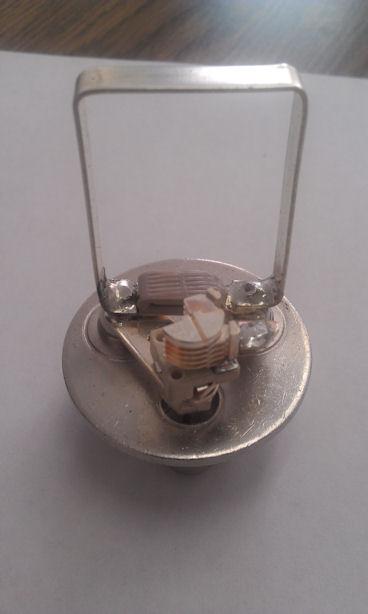
Factory TX-RX High-Pass coupling loop.
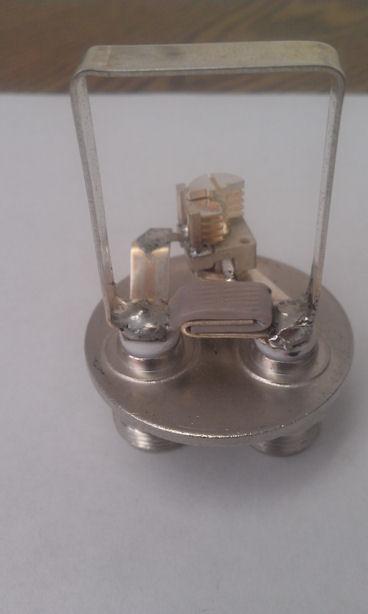
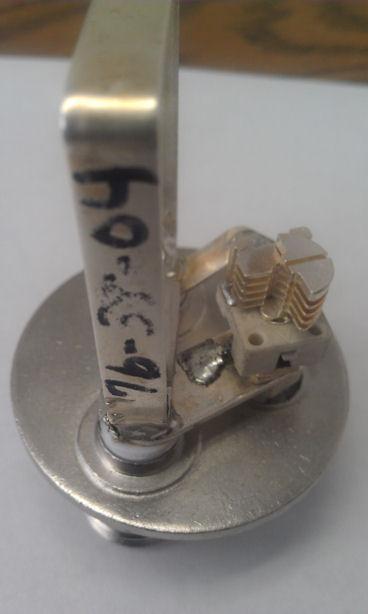
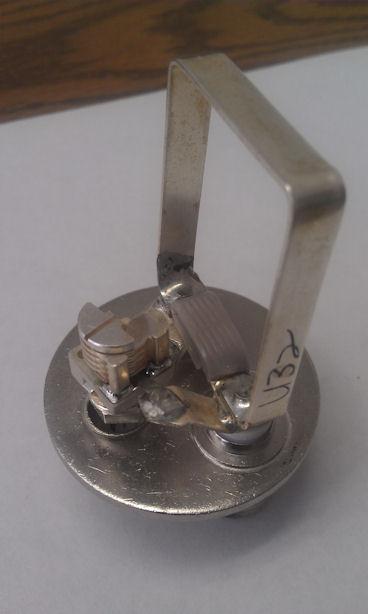
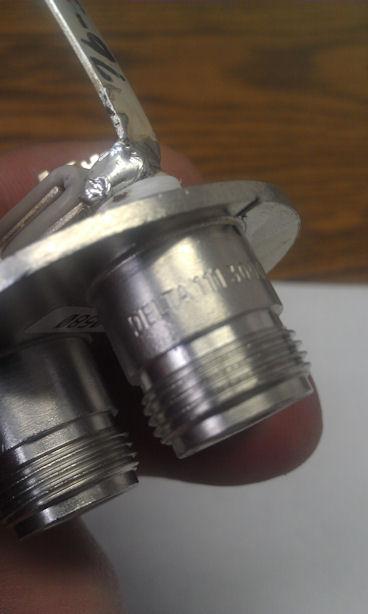
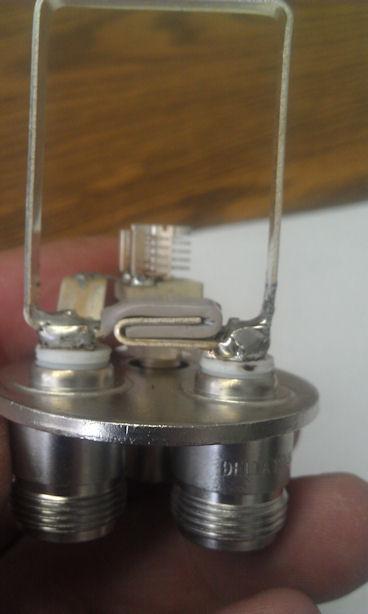
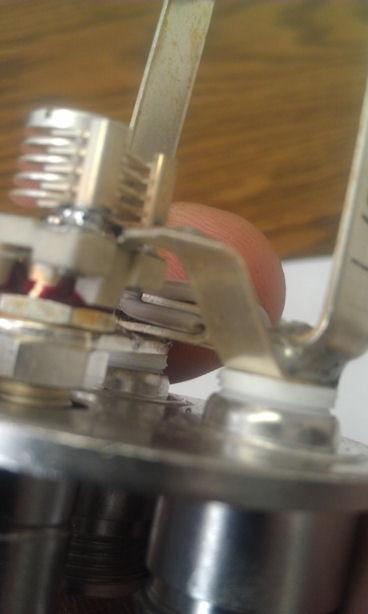
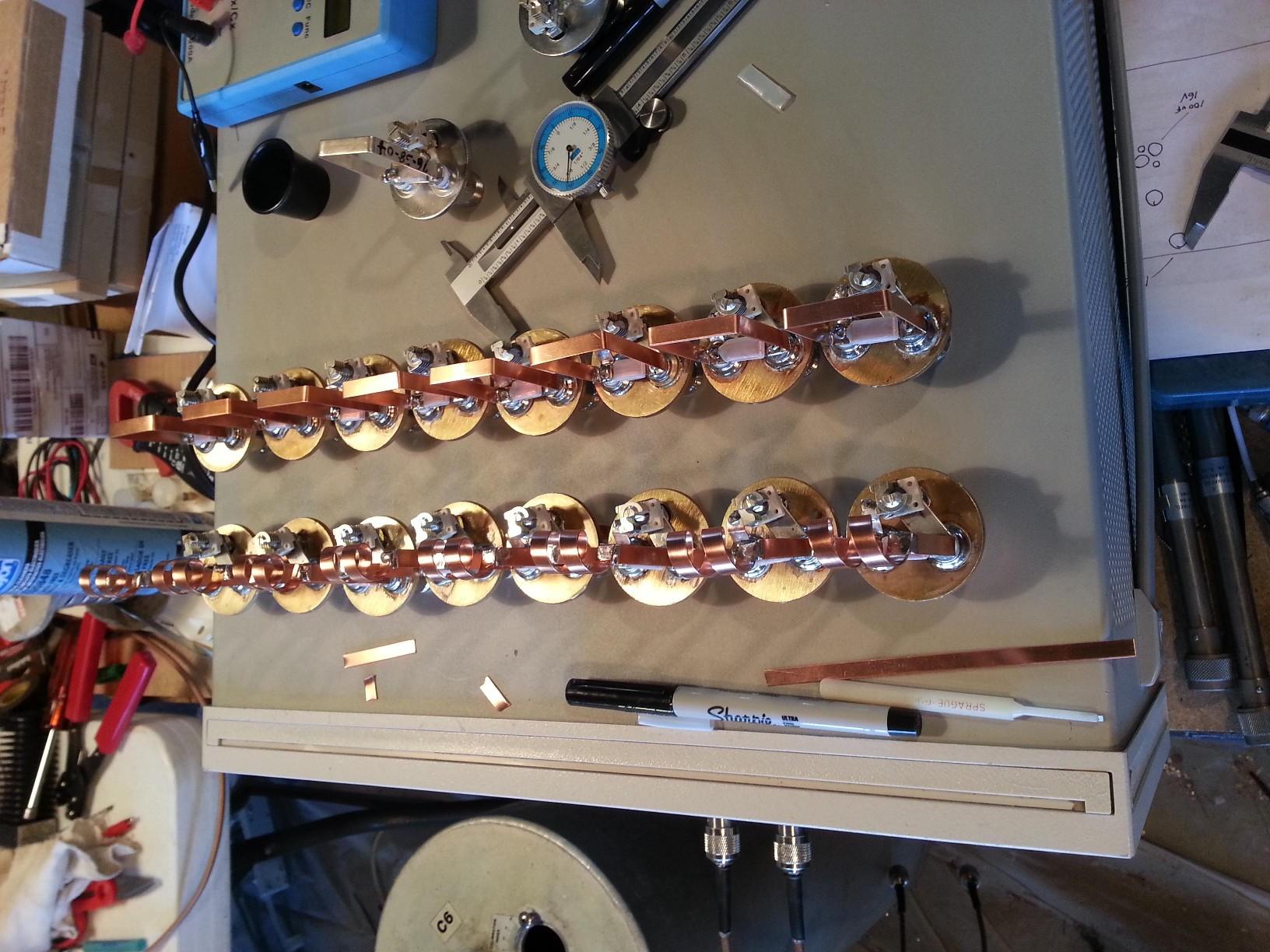
Click on the photo for a larger image.
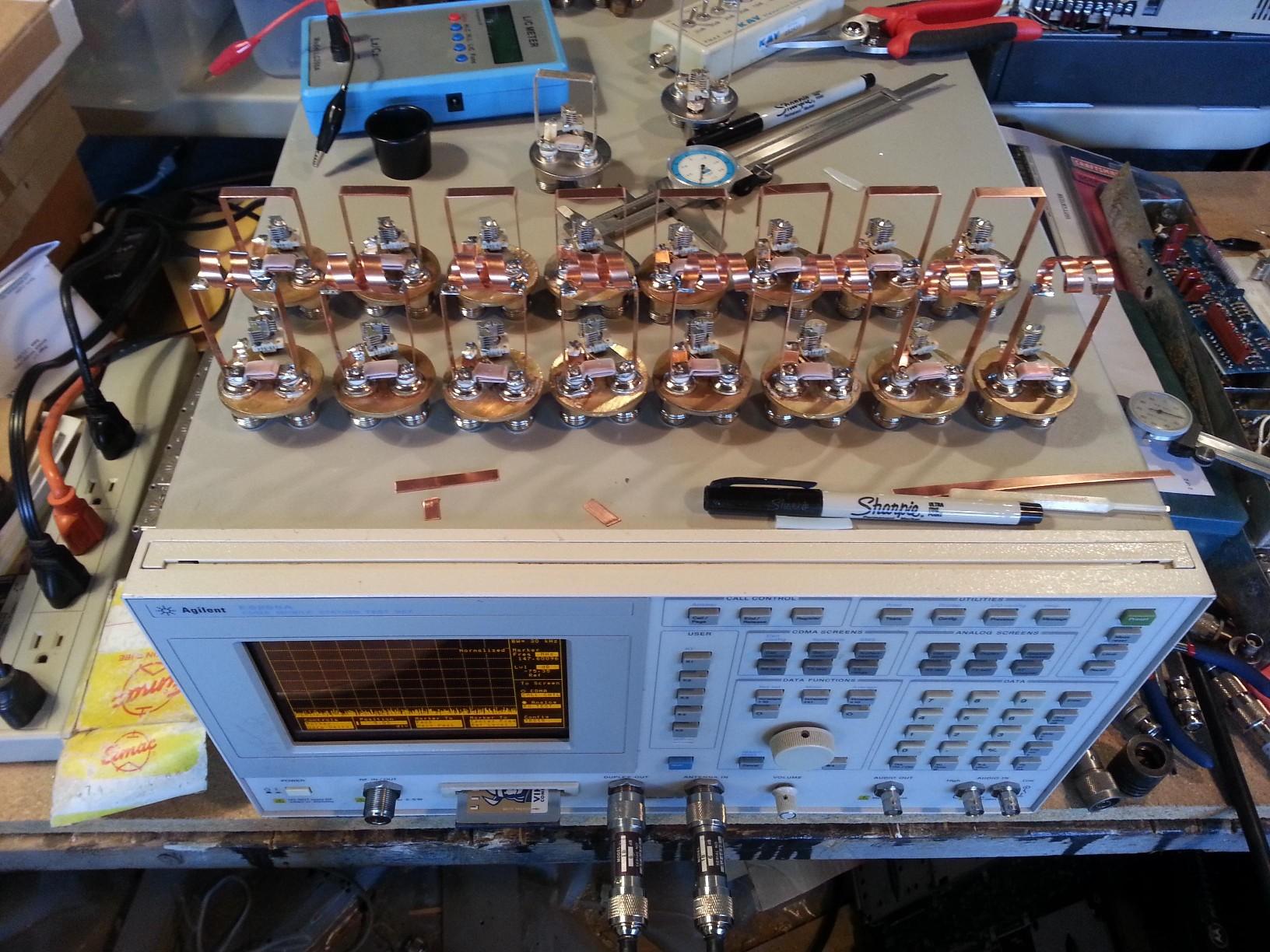
Click on the photo for a larger image.
I conclude that with determination and the right tools,
you CAN duplicate these more complicated coupling loops.
Here is what Jeff DePolo wrote after testing a pair of loops I built. Jeff used a 6 inch cavity for his tests, as compared to the 10 inch cavity I used above. Because of this, and the fact he rotated for .6 dB insertion loss, lesser notch depth is realized (as compared above) - no matter who made the loop.
With all loops adjusted for 0.6 dB insertion loss (+/- 0.025 dB):
(S11) - (S22) return loss and notch depth.
Factory Low-Pass: 22/25 dB return loss, 38.3 dB notch depth
W3KKC Low-Pass: 21/26 dB return loss, 39.2 dB notch depth
Factory High-Pass: 25/22 dB return loss, 39.9 dB notch depth
W3KKC High-Pass: 26/22 dB return loss, 40.7 dB notch depth
I'd say for all intents and purposes they are identical.
Nice job. Make more.
--- Jeff
The images below are from Jeff. They show the results as referenced above.
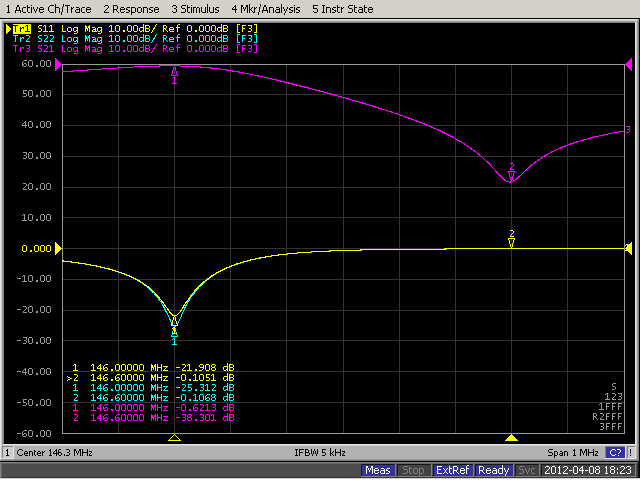
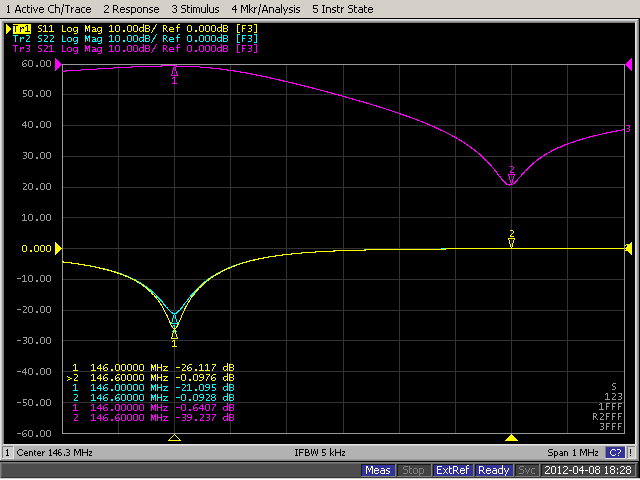
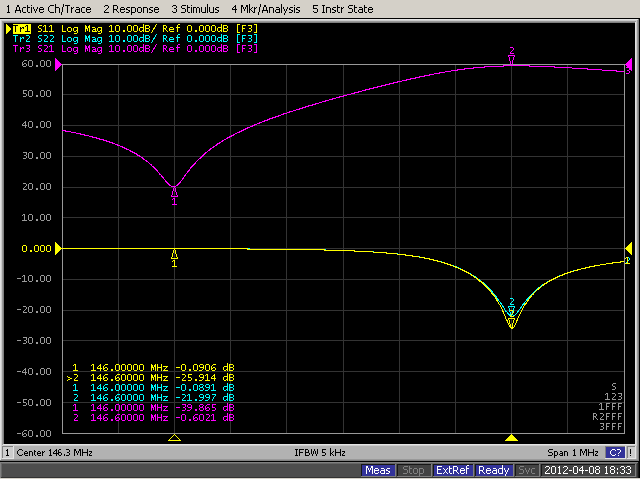
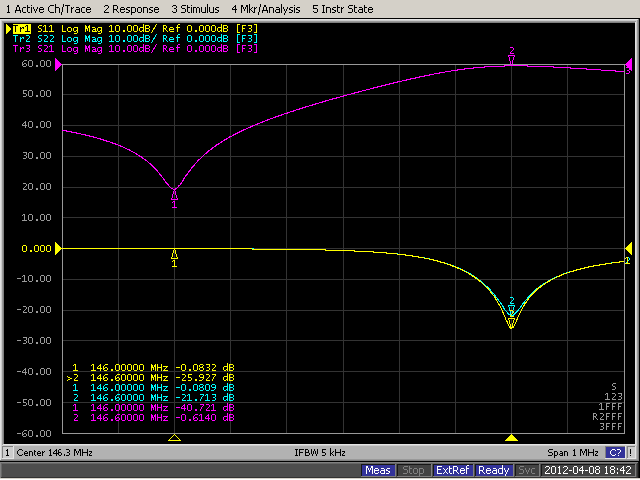
I would like to thank Gary - W5BI, Jeff - WN3A, Ryan - N3SSL, and Rich - WB2DSS for diagrams, pictures, N Tee connectors, comments, criticism, and encouragement. Over the years - I have built about 30 - 40 pairs of these coupling loops for various projects for myself and friends.
Copyright © January 2012 Kevin K. Custer W3KKC
(I upgraded in the middle of this project, changed my call sign - then changed it back)
All Rights Reserved.